BMW: Don't Fear The Four
It’s been 12 years since BMW offered a four-cylinder engine on a US-market offering, but starting this October, US dealers will begin offering new “TwinPower”four-pot versions of the Z4 roadster and 5-series sedan. And, as BMW’s US-market boss Jim O’Donnell explains to Automotive News [sub], there’s no reason to fear the four… anymore.
It wasn’t in line with our image, because it didn’t have the performance of the six cylinder. We were selling ourselves as the ultimate driving machine and really it wasn’t. Now that the engines have developed so far, it’s not an issue at all.
But now BMW is offering four-bangers because they offer an even better driving experience, right? Less weight, better turn-in, that kind of thing… right?
Uh, not so much, no. O’Donnell continues
CAFE is definitely driving this. This is huge for us. If we get this wrong, it screws up all of our plans in the U.S.
And O’Donnell is right to reference the risks involved. After all, Ford is already learning the hard way that charging high prices for downsized, fuel-efficient engines doesn’t always pan out, as its Explorer Ecoboost was mauled for lackluster performance by even the traditionally toothless Motor Trend. On the other hand, the CAFE-related problems with not offering smaller engines are even worse:
Failure to meet U. S. requirements produces fines of $55 per mile below the requirement multiplied by the total number of vehicles sold, Greg Schroeder, a research analyst at the Center for Automotive Research in Ann Arbor, Michigan, said in a telephone interview.
Selling 200,000 vehicles with a CAFE 20 mpg below the target, for example, would lead to an annual fine of $220 million. “As the fuel economy doubles they have to change their plan,” Schroeder, the industry analyst, said. “They’re going to have to improve fuel economy, they can’t just sit and pay fines forever.”
But don’t start bemoaning a new CAFE-induced Malaise era just yet: the new four-pot base engine may be down 6 percent compared to the previous entry-level six in the Z4, but it boasts an 18 percent improvement in torque. The new Z4 is .1 seconds faster to 60 MPH than its six-equipped predecessor, while the new four-cylinder 528i should shave .4 seconds off its predecessor’s 0-60 time. But for image-conscious luxury brands, the challenge isn’t simply proving that the performance numbers show progress… after all, they’ve spent decades leading consumers to believe that the number of cylinders was a key to premium-ness.
“The challenge really is for us as a company and you as media to look at how we describe performance, which tradition would tell is the number of cylinders and how big they are, and that determines a premium car or a high-performance car versus another car,” Ian Robertson, head of BMW sales, said in Carmel, California. “That is not the relevant measure anymore.”
That sell would be a lot easier to make if the new four-bangers sounded as good as we know BMW can make them. Check out the following video (starting at around :47) to see what we’re talking about.
More by Edward Niedermeyer
Latest Car Reviews
Read moreLatest Product Reviews
Read moreRecent Comments
- Joe65688619 Under Ghosn they went through the same short-term bottom-line thinking that GM did in the 80s/90s, and they have not recovered say, to their heyday in the 50s and 60s in terms of market share and innovation. Poor design decisions (a CVT in their front-wheel drive "4-Door Sports Car", model overlap in a poorly performing segment (they never needed the Altima AND the Maxima...what they needed was one vehicle with different drivetrain, including hybrid, to compete with the Accord/Camry, and decontenting their vehicles: My 2012 QX56 (I know, not a Nissan, but the same holds for the Armada) had power rear windows in the cargo area that could vent, a glass hatch on the back door that could be opened separate from the whole liftgate (in such a tall vehicle, kinda essential if you have it in a garage and want to load the trunk without having to open the garage door to make room for the lift gate), a nice driver's side folding armrest, and a few other quality-of-life details absent from my 2018 QX80. In a competitive market this attention to detai is can be the differentiator that sell cars. Now they are caught in the middle of the market, competing more with Hyundai and Kia and selling discounted vehicles near the same price points, but losing money on them. They invested also invested a lot in niche platforms. The Leaf was one of the first full EVs, but never really evolved. They misjudged the market - luxury EVs are selling, small budget models not so much. Variable compression engines offering little in terms of real-world power or tech, let a lot of complexity that is leading to higher failure rates. Aside from the Z and GT-R (low volume models), not much forced induction (whether your a fan or not, look at what Honda did with the CR-V and Acura RDX - same chassis, slap a turbo on it, make it nicer inside, and now you can sell it as a semi-premium brand with higher markup). That said, I do believe they retain the technical and engineering capability to do far better. About time management realized they need to make smarter investments and understand their markets better.
- Kwik_Shift_Pro4X Off-road fluff on vehicles that should not be off road needs to die.
- Kwik_Shift_Pro4X Saw this posted on social media; “Just bought a 2023 Tundra with the 14" screen. Let my son borrow it for the afternoon, he connected his phone to listen to his iTunes.The next day my insurance company raised my rates and added my son to my policy. The email said that a private company showed that my son drove the vehicle. He already had his own vehicle that he was insuring.My insurance company demanded he give all his insurance info and some private info for proof. He declined for privacy reasons and my insurance cancelled my policy.These new vehicles with their tech are on condition that we give up our privacy to enter their world. It's not worth it people.”
- TheEndlessEnigma Poor planning here, dropping a Vinfast dealer in Pensacola FL is just not going to work. I love Pensacola and that part of the Gulf Coast, but that area is by no means an EV adoption demographic.
- Keith Most of the stanced VAGS with roof racks are nuisance drivers in my area. Very likely this one's been driven hard. And that silly roof rack is extra $'s, likely at full retail lol. Reminds me of the guys back in the late 20th century would put in their ads that the installed aftermarket stereo would be a negotiated extra. Were they going to go find and reinstall that old Delco if you didn't want the Kraco/Jenson set up they hacked in?



















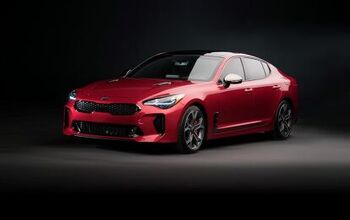
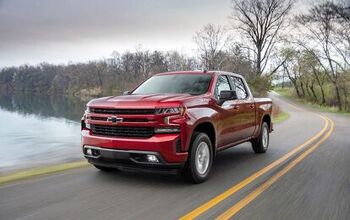
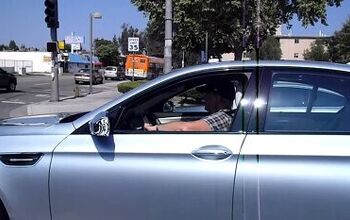
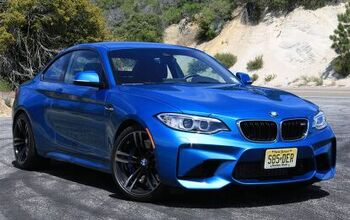








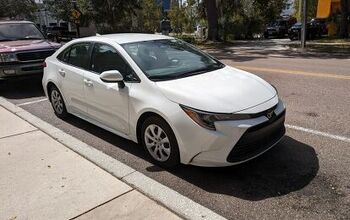

Comments
Join the conversation
"Remember the 2.3 turbo Mustang Cobra?" I think you're referring to the SVO Mustang from 1985. It cost $3000 (or 25%) more than the '85 5.0 GT that I bought instead. Compared to the GT, it barely sold.
Evidently few of you cynics have actually lived with a well-engineered turbo 4? Saab anyone? Audi? I can attest to the superior real-world usefulness of the Saab engine over the M30 I6 I had in my 535i 5 speed. Loved that car, but boy was it a slug. Unless you wound it to the redline. A tap of the toe in my 9000 CSE would produce MUCH more thrust, RIGHT NOW. Turbo lag is nothing compared to waiting for the I6 to deliver. Similar fuel economy numbers between them if you were into the gas pedal on both -- definitely NOT similar if you weren't. The 540 finally beat the 9000 powerwise, but not my a mile as you might suppose. In any case, it's not the glorious BMW engine noises that mattered, it's the utterly unflappable chassis that does. That, my friends, isn't going to go away. And the Saab 4 wasn't exactly grating on the ears. This might finally put to rest my bitter annoyance with the "BMW solution." To wit: any idiot can add cylinders and get more power; it takes actual prowess to find a better way. Like a turbo 4. I think they're going to nail it.